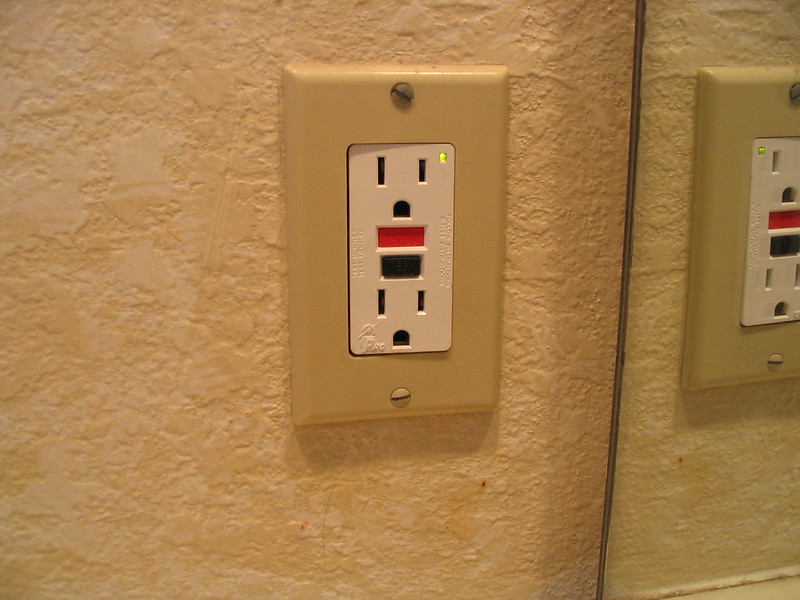
Discover the importance of GFI outlets for electrical safety and protection. Learn how they work, where to install them, and how to maintain them.
Welcome to the world of GFI outlets! Yoder Electric, a trusted family-owned business, is here to help you understand the importance and functionality of these outlets. With over 15 years of experience in the electrical industry, Yoder Electric has the expertise to ensure that your home or business is safe and up to code with the installation of GFI outlets. These outlets are designed to protect you from electrical shocks and are especially crucial in areas where water is present, such as kitchens and bathrooms. By working with Yoder Electric, you can rest assured that your electrical needs are in good hands. So, let’s dive in and learn more about why GFI outlets are essential for your safety and peace of mind.
What is a GFI Outlet?
Have you ever heard of a GFI outlet but aren’t quite sure what it is or how it works? In this article, we will walk you through everything you need to know about GFI outlets, also known as Ground Fault Circuit Interrupters. These outlets are an essential component in electrical safety, particularly in areas where water is present. Let’s dive into the details to help you understand how GFI outlets function and why they are crucial for your home or business.
Why are GFI Outlets Important?
GFI outlets are important because they help prevent electrical shock in areas with water exposure, such as kitchens, bathrooms, outdoor spaces, and utility rooms. These outlets detect any imbalances in the electrical current, shutting off power to the outlet within milliseconds to prevent potential electrocution.
If you have ever experienced a small shock when plugging in an appliance or electronic device, it could be due to a lack of GFI protection. By installing GFI outlets in the right locations, you can significantly reduce the risk of electric shock and protect yourself, your family, and your employees.
How Does a GFI Outlet Work?
GFI outlets work by continuously monitoring the flow of electricity between the hot and neutral wires connected to the outlet. If the GFI detects even a small imbalance in the current, as little as 5 milliamps, it will immediately trip the circuit, cutting off power to the outlet.
This rapid response is critical in preventing electrical shocks, especially in situations where water comes into contact with electrical devices. GFI outlets are designed to minimize the risk of electricity traveling through your body, potentially saving lives in the event of an accident.
Where Should GFI Outlets Be Installed?
GFI outlets should be installed in specific locations within your home or business to ensure maximum safety and compliance with electrical codes. Here are some common areas where GFI protection is recommended:
- Bathrooms: Due to the presence of water sources like sinks and showers
- Kitchens: Near water sources such as sinks, dishwashers, and refrigerators
- Outdoor Spaces: Patios, decks, and garage areas exposed to weather elements
- Utility Rooms: Where washing machines, dryers, and water heaters are located
By installing GFI outlets in these areas, you can minimize the risk of electrical accidents and provide a safer environment for everyone using your electrical devices.
How to Identify a GFI Outlet?
Identifying a GFI outlet is relatively easy once you know what to look for. Most GFI outlets have two buttons in the center of the outlet faceplate, typically labeled “TEST” and “RESET.” These buttons allow you to manually test the outlet’s functionality and reset it if the GFI trips due to a fault.
Additionally, GFI outlets usually have “WR” or “WTR” markings on the faceplate, indicating that the outlet is weather-resistant. This feature is essential for outdoor outlets exposed to rain, snow, or other weather conditions.
Installing and Replacing GFI Outlets
If you need to install or replace a GFI outlet in your home or business, it’s essential to follow the correct procedures to ensure safety and compliance. While some homeowners may feel comfortable doing the installation themselves, it’s always best to hire a licensed electrician for these tasks.
When replacing a GFI outlet, make sure to turn off the power to the circuit at the breaker box to avoid the risk of electrical shock. Follow these steps to replace a GFI outlet properly:
- Use a voltage tester to ensure the power is off before starting the replacement.
- Remove the faceplate and screws holding the outlet in place.
- Disconnect the wires from the old outlet and connect them to the new GFI outlet.
- Secure the outlet in the electrical box and replace the faceplate.
- Turn the power back on and test the outlet to ensure it is functioning correctly.
By following these steps and taking the necessary safety precautions, you can install or replace GFI outlets in a safe and effective manner.
Maintaining GFI Outlets
Once you have GFI outlets installed in your home or business, it’s essential to perform regular maintenance to ensure they continue to function correctly. Check your GFI outlets periodically by pressing the “TEST” button to simulate a ground fault and trip the circuit. If the GFI does not trip or reset, it may be time to replace the outlet.
Additionally, keep your GFI outlets clean and free of debris that could interfere with their operation. Dust and dirt buildup can affect the outlet’s ability to detect electrical imbalances, compromising its safety features. By maintaining your GFI outlets properly, you can rest assured that they will provide reliable protection for years to come.







